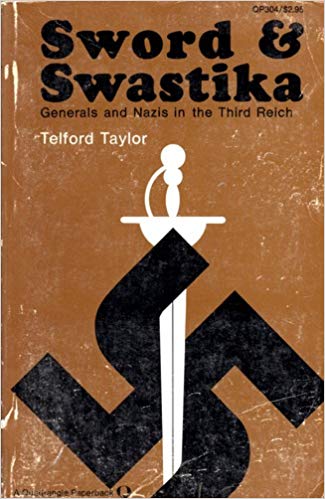Auschwitz: IG Farben and the History of the “Business with Disease”

January 27, 2020 marks the 75th anniversary of the liberation of Auschwitz by Soviet troops (27 January 1945). Rarely mentioned by the media, the I. G Auschwitz concentration camp was a private undertaking owned by I. G. Farben – Bayer.
International Holocaust Remembrance Day. In Commemoration of the Liberation of Auschwitz, January 27, 2020
***
The most powerful German economic corporate emporium in the first half of this century was the Interessengemeinschaft Farben or IG Farben, for short. Interessengemeinschaft stands for “Association of Common Interests” and was nothing more than a powerful cartel of BASF, Bayer, Hoechst, and other German chemical and pharmaceutical companies. IG Farben was the single largest donor to the election campaign of Adolph Hitler. One year before Hitler seized power, IG Farben donated 400,000 marks to Hitler and his Nazi party. Accordingly, after Hitler’s seizure of power, IG Farben was the single largest profiteer of the German conquest of the world, the Second World War.
One hundred percent of all explosives and of all synthetic gasoline came from the factories of IG Farben. Whenever the German Wehrmacht conquered another country, IG Farben followed, systematically taking over the industries of those countries. Through this close collaboration with Hitler’s Wehrmacht, IG Farben participated in the plunder of Austria, Czechoslovakia, Poland, Norway, Holland, Belgium, France and all other countries conquered by the Nazis.
The U.S. government’s investigation of all the factors leading to the Second World War in 1946 came to the conclusion that without IG Farben the Second World War would simply not have been possible. We have to come to grips with the fact that it was not the psychopath, Adolph Hitler, or bad genes of the German people that brought about the Second World War. Economic greed by companies like Bayer, BASF and Hoechst was the key factor in bringing about the Holocaust.
No one who saw Steven Spielberg’s film “Schindler’s List” will forget the scenes in the Auschwitz concentration camp.
The Birth of IG Farben and the Support for Hitler (from the book “Sword And Swastika” by Telford Taylor)
 After the First World War, all the major chemical concerns were merged into a single gigantic trust in 1926 – the I.G. Farbenindustrie A.G. – under the leadership of Carl Duisberg and Carl Bosch. Dyestuffs, pharmaceuticals, photographic supplies, explosives, and a myriad of other products poured forth in ever-growing volume and variety.
After the First World War, all the major chemical concerns were merged into a single gigantic trust in 1926 – the I.G. Farbenindustrie A.G. – under the leadership of Carl Duisberg and Carl Bosch. Dyestuffs, pharmaceuticals, photographic supplies, explosives, and a myriad of other products poured forth in ever-growing volume and variety.
Soon after the election of July, 1932, in which the Nazis had doubled their vote, Heinrich Buetefisch [chief of the I.G. Farben – Leuna plant] and Heinrich Gattineau [a Farben official who was also an SA officer and personally known to both Rudolf Hess and Ernst Roehm]. waited upon the Fuehrer-to-be to learn whether Farben could count on governmental support for its synthetic gasoline program in the event the Nazis should attain power. Hitler readily agreed that Farben should be given the necessary support to warrant expansion of the Leuna plant.
After the seizure of power, Farben lost no time following up this auspicious introduction. Significantly, Farben’s chosen channel was not the ‘Heeresleitung’ but Hermann Goering’s new Air Ministry. In a long letter to Goering’s deputy Erhard Milch, Carl Krauch of Farben outlined a “four-year plan” for the expansion of synthetic fuel output. Thereupon, Milch called in Generalleutnant von Vollard Bockelberg, Chief of the Army Ordnance Office, and it was agreed that the Army and the Air Ministry would together sponsor the Krauch project. A few months later Farben received a formal Reich contract calling for the enlargement of Leuna so that production would reach three hundred thousand tons per year by 1937, with Farben’s sales guaranteed for ten years – until June 30, 1944 – on a cost-plus basis.

1941: I.G. Farben’s “friendship” with the SS helps to increase the speed of construction of Auschwitz-Buna against the resistance “of some little bureaucrats”. A letter from Dr. Otto Ambros to the Director of I.G. Farben Frankfurt, Fritz ter Meer
I.G. Farben and the Auschwitz Concentration Camp
Auschwitz was the largest mass extermination factory in human history, but the concentration camp was only an appendix.
The main project was IG Auschwitz, a 100% subsidiary of IG Farben, the largest industrial complex of the world for manufacturing synthetic gasoline and rubber for the conquest of Europe.
On April 14, 1941 , in Ludwigshafen , Otto Armbrust, the IG Farben board member responsible for the Auschwitz project, stated to his IG Farben board colleagues, “our new friendship with the SS is a blessing. We have determined all measures integrating the concentration camps to benefit our company.”
The pharmaceutical departments of the IG Farben cartel used the victims of the concentration camps in their own way: thousands of them died during human experiments such as the testing of new and unknown vaccines.
There was no retirement plan for the prisoners of IG Auschwitz. Those who were too weak or too sick to work were selected at the main gate of the IG Auschwitz factory and sent to the gas chambers. Even the chemical gas Zyklon-B used for the annihilation of millions of people was derived from the drawing boards and factories of IG Farben.
Note to readers: please click the share buttons above or below. Forward this article to your email lists. Crosspost on your blog site, internet forums. etc.
All images in this article are from the author

